Close
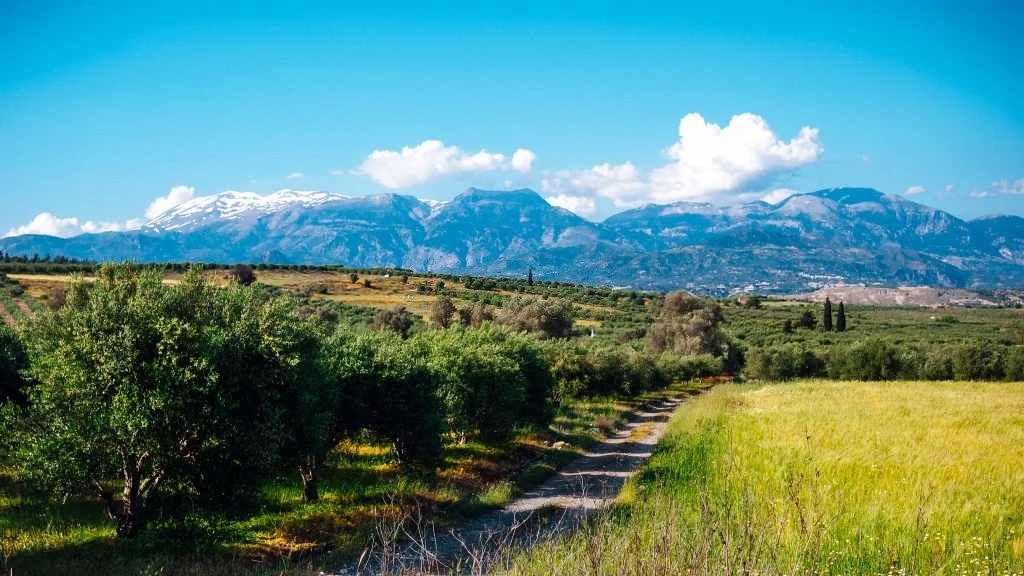
Crete is the undisputed leading culinary destination in Greece. In this extraordinary island, food is not just for sustenance, but inextricably connected with the local way of life. Here, eating is an experience bound with the history and heritage of the island that goes back thousands of years. Cuisine here – some times unmodified since the Minoan era, 3500 years ago – is one of foundation, not of intricate sauces. Its strength lies in the quality and freshness of its raw materials, the use of unique, native, wild herbs and greens and purity of taste.
Here, the mountain and sea blend with the abundant sunshine and bless the land with ingredients of an unsurpassable power of taste, health-promoting capacity, and distinct character!
But it’s not just the ingredients that make Cretan cuisine so special; it’s also the love (meraki – μεράκι) and imagination that goes into every dish.
Having said that, it is important to also mention that Crete is also a very touristic island with hundreds of businesses serving the culinary sector. As a result, food is not guaranteed to be of the same quality and/or taste everywhere.
So it is not only important to locate a specific ingredient or dish but also the right place where it is served authentically. Unfortunately, one cannot make any suggestions here but, generally speaking, the history of each place as well as modern technology assistants (reviews from TripAdvisor) can be helpful in making a decision.
So, given the above, the question “What foods I must definitely try on my vacation in Crete” that I as a 4-generation local Cretan get asked a lot seems so logical.
But the answer is not so straightforward. First of all we must include in the list ingredients and dishes as separate entities because there are some ingredients that you must taste just by themselves. Also, you must bear with me because I need to initiate you into a world of Greek names – some of them idiosyncratic to Cretans and peculiar even to the rest of Greece. So let’s start your culinary trip.



I think that being in Crete it is not possible to avoid tasting olive oil even if you tried! Greece being the third olive-oil producing country in the world and Crete having the third of the whole Greek production is easy to understand why. Olive oil has Its history directly linked to the culture and civilization of the Greek people and to Cretans especially.
Crete boasts more than 30 million olive oil trees and the most ancient olive tree in the world (a touristic attraction that remarkably still bears fruit – the Monumental Olive Tree , located at Pano Vouves of D.D. Vouves of the Municipality of Kolymvari (coordinates N 35th 29,212 and EO 23rd 47,217 and altitude 272 m) ).
Olive oil comes in three different varieties and several cultivations are organic and some even biodynamic!
Crete produces superior quality olive oil and more than 90% belongs to the category of extra virgin. Like wine, or cocoa, or tea, different varieties, different farmers and different soil produce oil with different taste. The early harvest (agourolado – unripe green oil) biodynamic olive oil is considered by many a powerful medicinal liquid.
There are plenty of olive presses you can visit, offering olive oil-tasting and guides who will explain the secret to why Crete’s olive oil is unlike any other in Greece. Taste it alone, with homemade-bread or with a traditional barley rusk – dakos.
Dakos
Dakos is a traditional Cretan salad made with barley rusk, fresh tomatoes, Myzithra cheese, and olives. The rusk is soaked in water and then topped with the other ingredients, creating a delicious and refreshing salad. It’s a perfect lunchtime dish or a light dinner option, and it’s a great way to sample the flavors of the island.
Stamnagathi
Stamnagathi is a type of wild green that grows in abundance in Crete. Stamnagathi (Cichorium spinosum) was considered a medicine for the ancientsand is justifiably highly regarded in Crete.
It has a slightly bitter taste, and it’s usually served sautéed with olive oil and lemon. Stamnagathi is a powerhouse of antioxidants and vitamins, making it one of the best health-promoting plants in the world. Stamnagathi contains vitamin C, vitamin E, β-carotene, vitamin A and phenols, but most importantly contains glutathione – an amino acid that is converted to glutathione peroxidase, which helps the body get rid of toxins. Stamnagathi is also a good source of iron, zinc, potassium and magnesium. Contains moderate amounts of α-linolenic acid omega-3 fatty acids too.
You can taste it raw or cooked in a variety of different ways (as with many Cretan ingredients) like with eggs or meat (lamb or goat).
Apart from stamnagathi, Cretans (and Greeks in general especially in villages) enjoy a wide variety of wild greens (agria horta) that come in many different names and varieties. They have been central to the Greek diet for millennia and they are eaten not just for their complexity of tastes (bitter, sweet, nutty…) but also for their remarkable health benefits. Villages are your best bet to trying them.
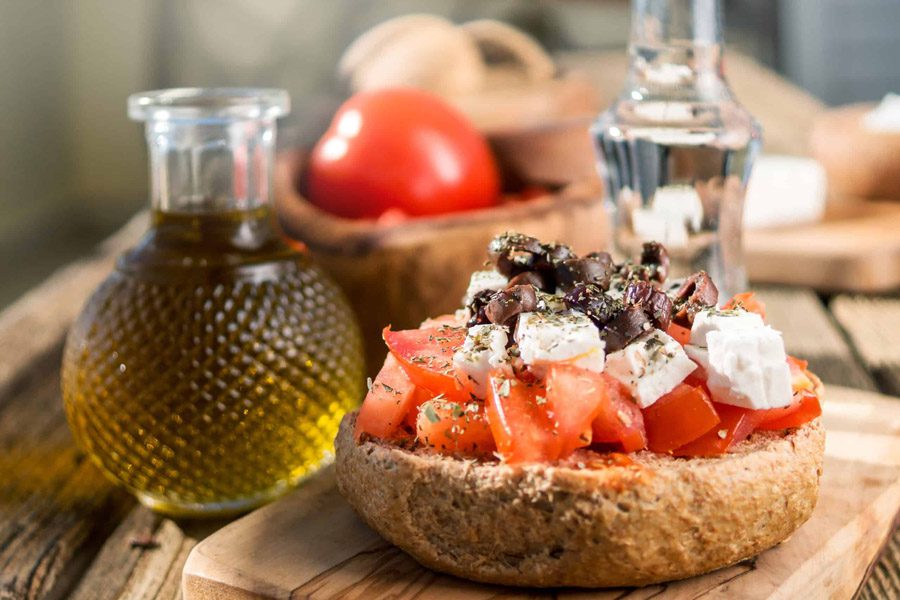
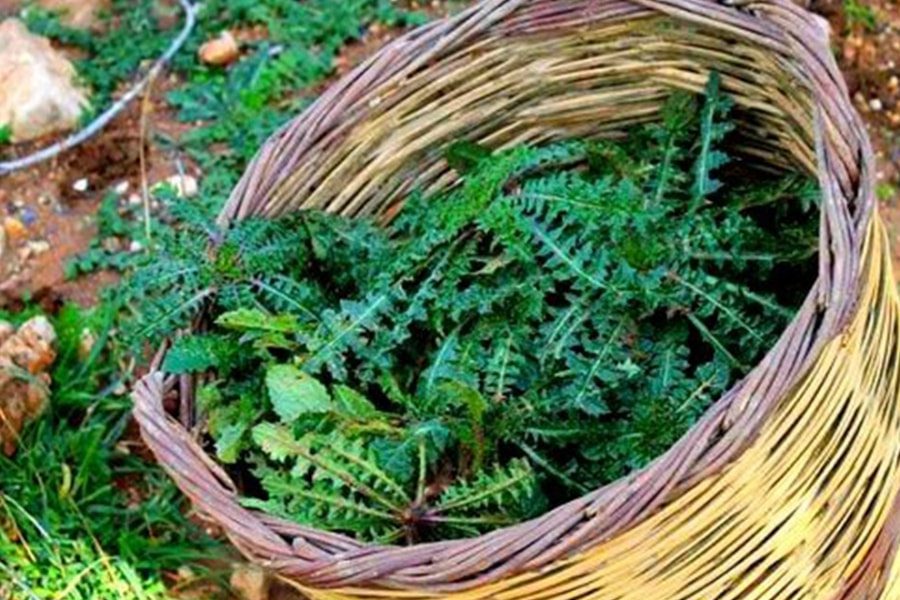
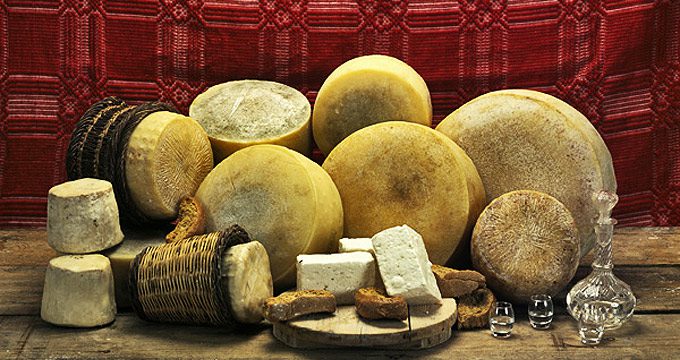
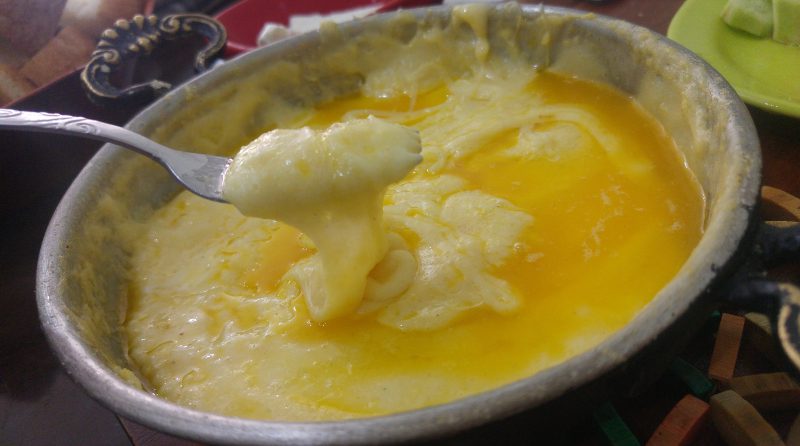

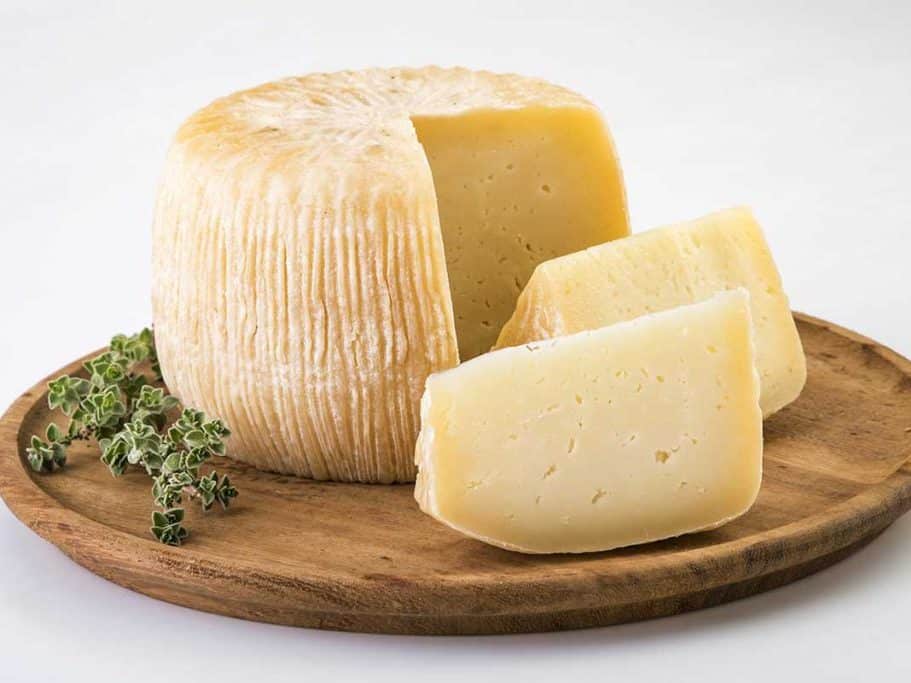
Crete is a cheese-paradise. It is one of the highest cheese-consuming places in the world. Cheese comes in so many varieties here and forms the basis for many Cretan dishes. Also cheese itself is enjoyed all hours of the day, as an accompaniment, as an appetizer, as a main course or as a dessert, with Cretan thyme (or other variety) honey, or jam or fruits.
Staka
Staka is a dairy product between cheese and yogurt. After milking, they skim the cream from the milk (which automatically undergoes fermentation, creating a sour cream) and lightly salt it. When they have collected enough of the cream, they heat it for several days on a very low heat, adding a small amount of flour. In this way the proteins are separated from the fat. The white and gelled mass of proteins is staka. It has a whitish or pale yellow color with a strong milk flavor. It is cooked with eggs, spaghetti, rice or even in pies, while it is also consumed raw as a cheese salad.
Diktis Cheese
I will start the cheeses list with one, which is not very well known, the cheese “Diktis” . It takes its name from the area of Mt. Diktis in the Lasithi plateau where it is made. It is very difficult to find commercially. It is low in fat, hard and very salty. It is kept in containers with virgin olive oil and is very spicy.
Malaka
“Malaka” is the raw graviera (gruyere). It is especially enjoyed in the region of Chania where they love graviera before it is ripe and use it in many local pies and especially in the Chania cake which is made with 4 cheeses, lamb and mint. You can try it with grilled tomatoes with olive oil, oregano and bread from the coal.
Myzithra (or mizithra) or A(n)thotyros
In Eastern Crete it is called Myzithra, in the area of Chania is called Anthotyros and it is made from the whey of making other cheeses. Fresh milk is added to the whey, heated again with rennet (pythia) and a soft fresh cheese is obtained. The cheese has a tangy, slightly salty flavor and a crumbly texture, making it a versatile ingredient in both sweet and savory dishes.
My grandfather, Apostolos Salkintzis, pioneered, combining this cheese with the bougatsa recipes he brought from Smyrna and created – for the first time on the island – a new taste, the famous Bougatsa with Cretan myzithra. You can read more about his story here.
“Cretan Kefalotyri”
Another goat’s milk cheese, a salty and spicy product, aged for at least four months. Classic taste, it accompanies perfectly pasta dishes. You can find it in soufflé, pasticcio and moussaka too.
“Myzithra of Chania” or Pychtogalo
In Rethymno they call it anthogalo. Goat soft cheese, usually put in sfakianopites (pies from Sfakia) and in the boureki of Chania. It is delicious on warm bread with bergamot or orange jam!
“Galomyzithra”
The cheesemaking process is simple. Milk turns into cheese with natural acidification. It was difficult to find it commercially in the past as only housewives made it at home. It is very similar to Myzithra of Chania. It is very tasty with a sub-sour taste and at the same time soft. It accompanies dako perfectly as well as a rich tomato salad.
“Tyrozouli”
Tyrozouli is the cheese of the house, as its process is so simple: You boil goat’s milk with a little salt and when it starts to bubble, you pour in sour cream or vinegar or lemon or even fig milk. When the milk gets sour, you collect it with a slotted spoon and after salting it a little, you put it in a cloth-colander until it drains. In Anogeia region they also call it tyromalama. It is eaten fresh and its best friend is thyme honey.
“Graviera” (gruyere)
“Graviera” can be rightfully called the Queen of Cretan cheeses. Greasy, salty, buttery, you can find it with or without holes. If you are lucky enough to find “tripas” (mean. of the hole), i.e. graviera that has matured in a mountain cave, you will surely experience what greatness in taste means. Even more if you succeed in finding (most likely in Mylopotamos or Sfakia area) a Graviera with 18-months maturation (or more), you will experience a taste delirium. Certainly a must-taste!
Gamopilafo
Gamopilafo is a traditional Cretan wedding dish made with rice, chicken or lamb, and a rich broth. The rice is cooked in the broth until it becomes creamy and infused with flavor. It’s a hearty and comforting dish that’s perfect for a special occasion or a romantic dinner.
Antikristo
Antikristo is a traditional way of cooking meat that’s unique to Crete. The meat is skewered and cooked over an open flame until it’s crispy on the outside and tender on the inside. The name “antikristo” means “opposite” in Greek, referring to the way the meat is cooked on the opposite side of the flame. This method of cooking produces incredibly juicy and flavorful meat that’s a must-try for meat lovers.
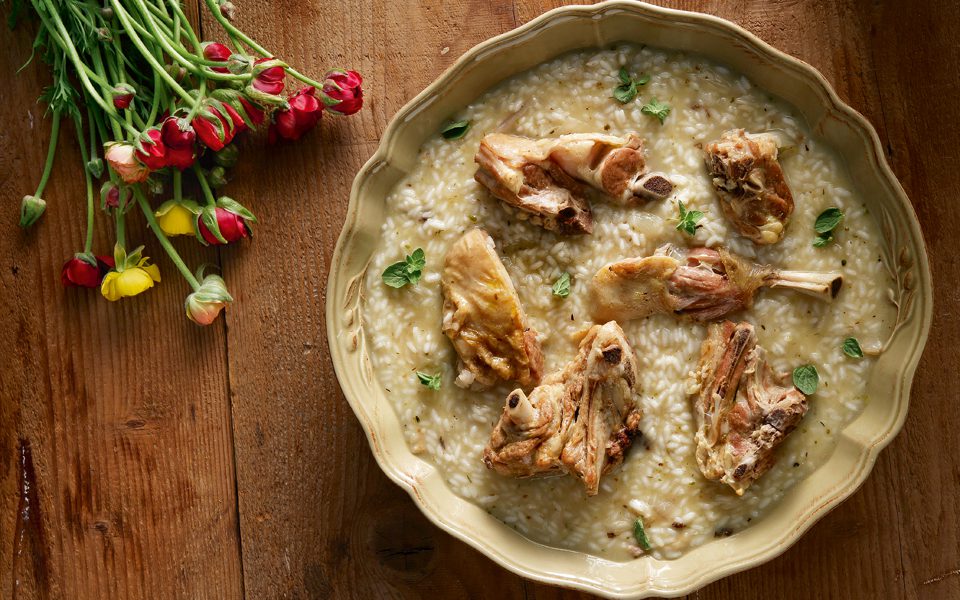
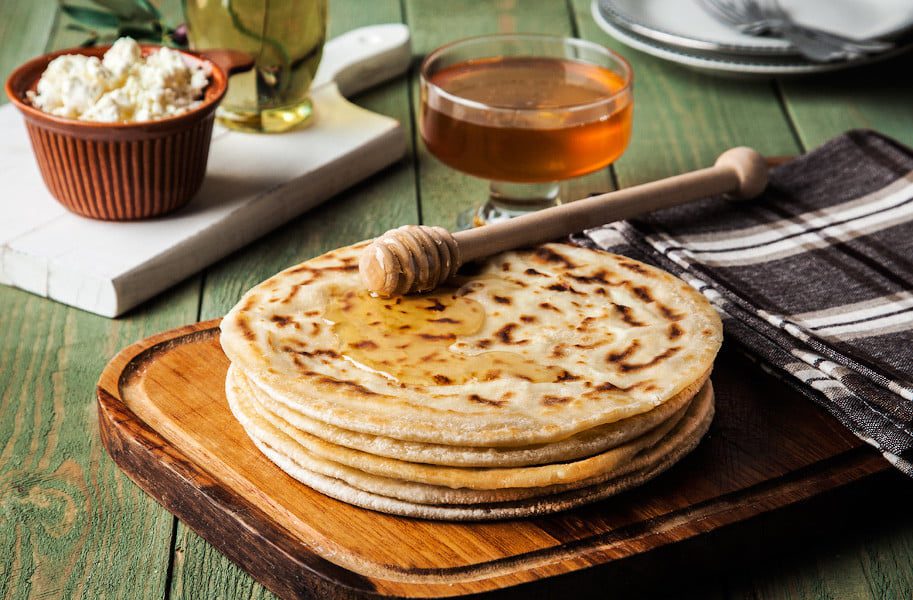

Kalitsounia
Kalitsounia are small, savory pastries filled with Myzithra cheese, herbs, and sometimes spinach or other greens. They’re usually served as a snack or appetizer and are a popular food during the holiday season. The pastries are baked until they’re crispy and golden brown, and they’re perfect for dipping into tzatziki or other dips.
Sfakianopita
Sfakianopita is a savory pie from the Sfakia region of Crete. It’s made with phyllo dough and filled with Myzithra cheese and honey. The pie is then baked until golden brown and crispy. It’s a perfect dish for breakfast or as a snack, and it’s a great way to sample the flavors of this unique region of the island.
Bougatsa
Bougatsa is a traditional Greek pastry that is particularly popular on the island of Crete. It is made by layering phyllo (dough) pastry with a filling of semolina custard or cheese, often with a hint of lemon or vanilla. The pastry is then baked until golden brown and crispy on the outside, while the filling remains creamy and soft on the inside. Bougatsa can be served as a sweet or savory dish, and is often enjoyed for breakfast or as a midday snack with a cup of Greek coffee. It is a beloved delicacy that has been enjoyed by Greeks for centuries.
Bougatsa is not a native Cretan food. Its history can be traced in the days of the Byzantine empire and in its current form it was brought to Crete by Asia Minor immigrants, master chefs who lived in Smyrna and in other Asia Minor regions.
However, this culinary delight rooted in the island and became one of its most famous dishes.
As a proud Cretan I hold a deep love and respect for the island’s rich culinary heritage, but bougatsa is my own family’s legacy. My grandfather Apostolos Salkitzis, the master of the bougatsa of Hamidieh of Smyrna, came to Crete in 1922 and brought with him his mastery of bougatsa and dough sheet in general. He also introduced, uniquely in Crete, beyond the classic bougatsa with cream, bougatsa with myzithra, a delicious marriage that was embraced by the locals and became a Cretan legend. My family serves this authentic bougatsa in each of our three award-won restaurants in Heraklion for four generations! We don’t just simply serve a dish, but we are serving the mandate “The Best Bougatsa of Crete” that Grandpa Apostolos dictated. We make the Bougatsa (and every dough sheet we use in our recipes) as it was back then. By hand, in air, fresh every day and crispy. We select our ingredients, carefully, from small Cretan producers ensuring that the quality and taste are authentic and unnegotiable.


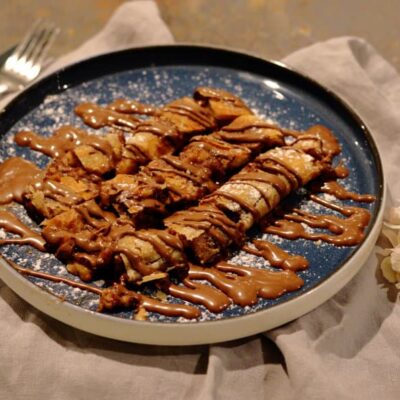



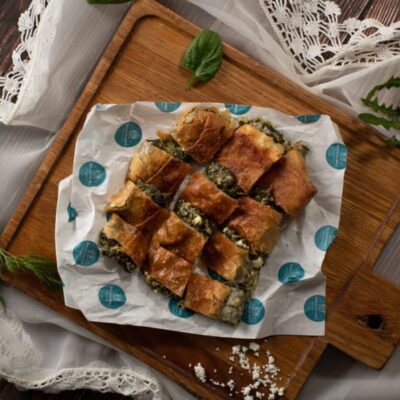
And, over the years, we have introduced new flavors and made bougatsa a complete dish that you can enjoy any time of the day.
So today, you can enjoy bougatsa with cream or with myzithra, bougatsa with apple, bougatsa with goat cheese and zucchini, bougatsa with minced meat, vegetable pie, vegetable pie with myzithra, with local Cretan, thyme honey (or without), with local ice cream (or without) , with cinnamon (or not) in various combinations and flavors to choose the ones that suit you best.
Loukoumades
Loukoumades are small, deep-fried doughnuts, which are then drizzled with honey and sprinkled with cinnamon. These fluffy, golden-brown bites of heaven are the perfect dessert after a long day of sightseeing. They’re a classic Cretan dessert and a must-try for any visitor to the island.
We, at Phyllosophies we use pure Cretan thyme honey, flour from local Cretan mills for the dough, Cretan olive oil for frying, and pure local milk for the ice creams. We also serve them with sesame, walnuts, sugar, ice cream or even chocolate. Our customers, report that our loukoumades are the tastiest they have ever been served. Come and try them and tell us what you think.
Tsikoudia
Tsikoudia is a traditional Cretan spirit made from the leftovers of the grape harvest. It’s similar to grappa or raki and is usually served as a digestif after a meal. It has a strong, fruity flavor and a high alcohol content, so it’s not for the faint of heart. But if you’re looking for a true taste of Crete, then a shot of tsikoudia is a must-try.
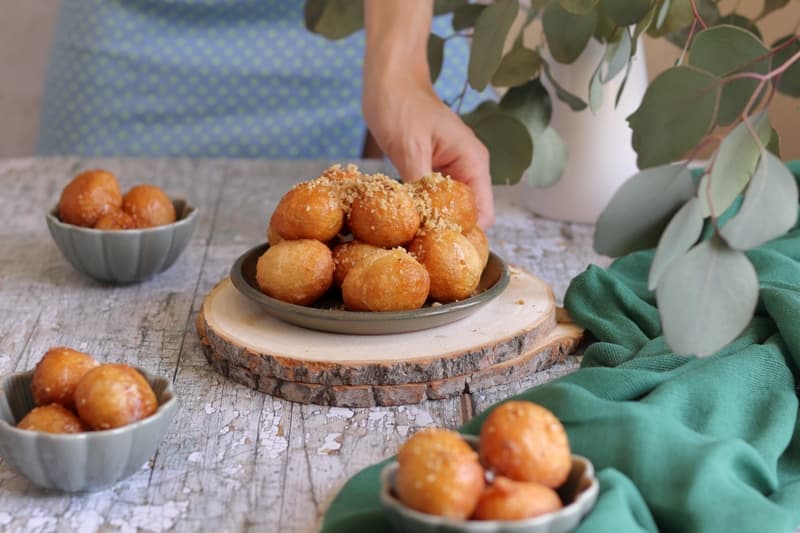
Crete is a gastronomical paradise, with a wide variety of dishes to suit every taste. From savory pies and salads to sweet pastries and desserts, there’s something for everyone on this beautiful island. If you’re planning a vacation in Crete, then be sure to search and try the foods above. Immerse yourself in the experience of tasting and you’ll get a true taste of this magnificent island. So come to Crete and experience the flavors of this paradise for yourself.

97 Gerakari str, P.C.:74131
Rethymno, Crete, Greece
Phone: +30 2831 102796
Mobile: +30 6970 350150
E-mail: contact@thinkvilla.gr